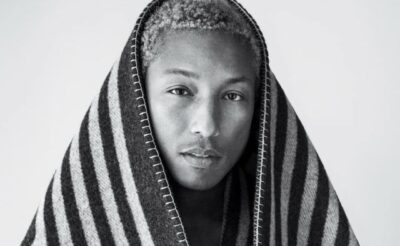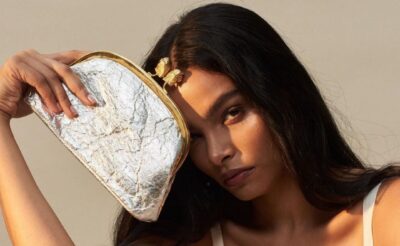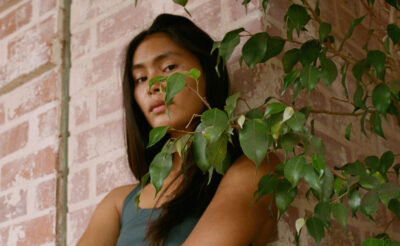SUSTAINABLE FASHION STALWART GABRIELA HEARST TALKS TO MOJEH ABOUT HER LATEST BAG COLLECTION AND ONGOING QUEST TO LINK LUXURY, LONGEVITY AND ECO-AWARENESS
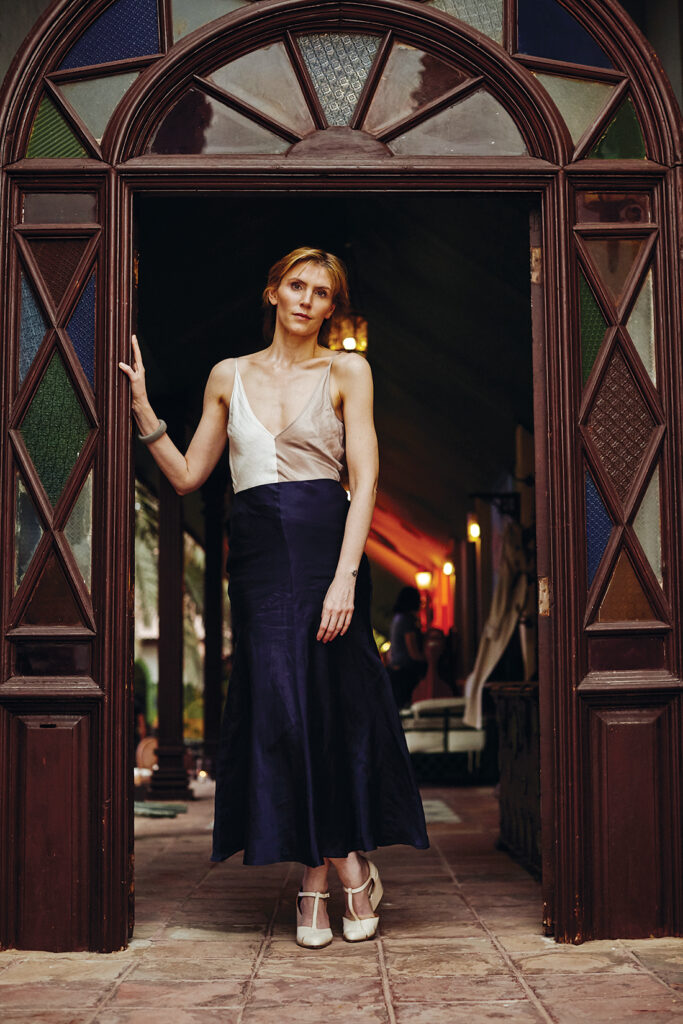
Designer and sustainability advocate, Gabriela Hearst
The list of women who wear Gabriela Hearst reads like a who’s who of generational game-changers. From Oprah Winfrey, Queen Rania of Jordan and Alexandria Ocasio-Cortez to Jill Biden and Meghan Markle, an army of smart, powerful and inspiring women set on making a difference in the world choose Gabriela’s clothing as their suit of armour in which to do battle.
Launched in 2016, with the goal of redefining modern luxury, while simultaneously transforming the concept of sustainability in fashion, Gabriela’s eponymous label has quickly become the go-to for busy professionals, with better things to do every day than agonise over what to wear. With impeccable suiting a brand signature, effortlessly chic dresses, beautifully cut separates and exquisite coats are key: their timeless elegance attuned to a contemporary reality that resonates with style-rich, time-poor women the world over.
Focused on uncompromising quality that will last for a lifetime and made, most importantly, using sustainable processes, Gabriela’s mission of creating luxury with longevity from leftovers – albeit premium ones – has kick-started a trend that is changing the way the fashion industry works. And while her flawless clothing can silently command the attention of a room without even trying, her head-turning bags have become the stuff of modern fashion legend.
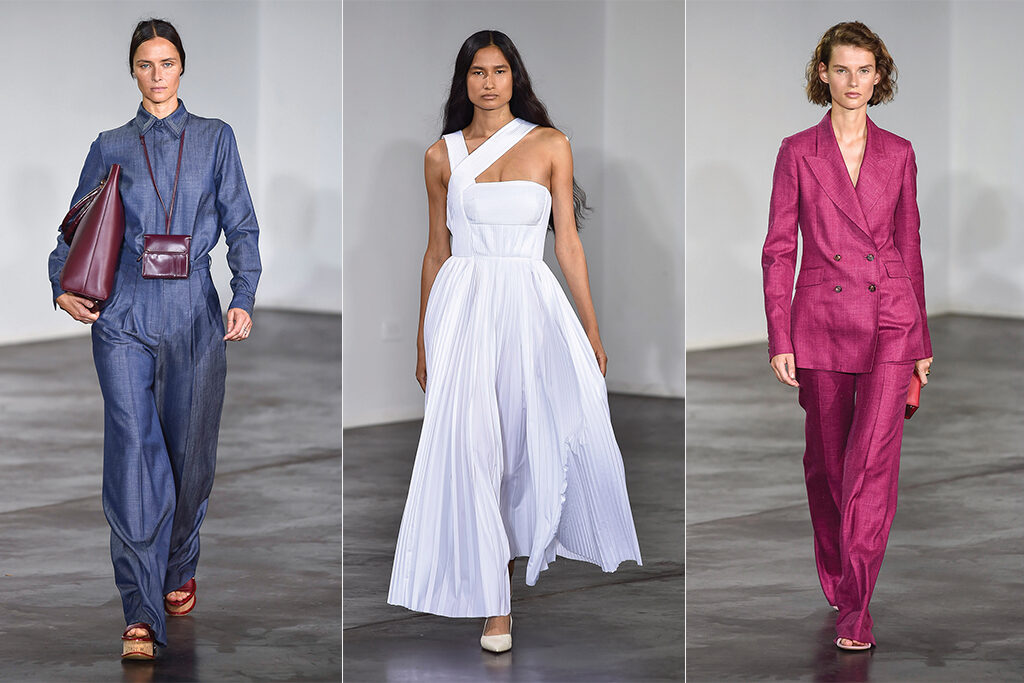
Gabriela Hearst S/S19
Made in extremely limited quantities, and as complex to construct as they are to get hold of, their rarity and collectability has been likened to that of an Hermès Birkin – a comparison Gabriela is thrilled to accept. “I’m never offended by being compared to Hermès,” she says with a smile when we meet on a glorious spring day at Dubai’s Bvlgari Resort. Visiting the city for the first time to host an exclusive, sustainably-built pop-up for her highly sought-after bags at The Dubai Mall’s Level Shoes, the 42-year-old designer’s debut in the region coincides with the global launch of her latest limited edition, handcrafted clutch bag, named the Walkwoman.
“As you’ve probably guessed, this bag is inspired by the Walkman, which was the first recordable media player and named after the empowerment of the future,” explains Uruguay-born, New York-based Gabriela of the latest silhouette. “It’s crafted by two teams: one jewellery, because it’s a stone case, and the button is carved from malachite or lapis lazuli, and the other does the interchangeable leather or alligator strap and its exterior. It’s a really complicated bag, and it took over a year to develop.”
Indeed, none of Gabriela’s bags are simple to make; nor are they wastefully produced; nor the concepts behind them basic. Her first bag, the Nina, was inspired by her love for the work of Colombian artist Fernando Botero; the Patsy, from her second collection, a reference to the lunchboxes carried by female coal miners of the Victorian age; the accordian-pleated Diana a nod to her love of traditional Argentinian tango.
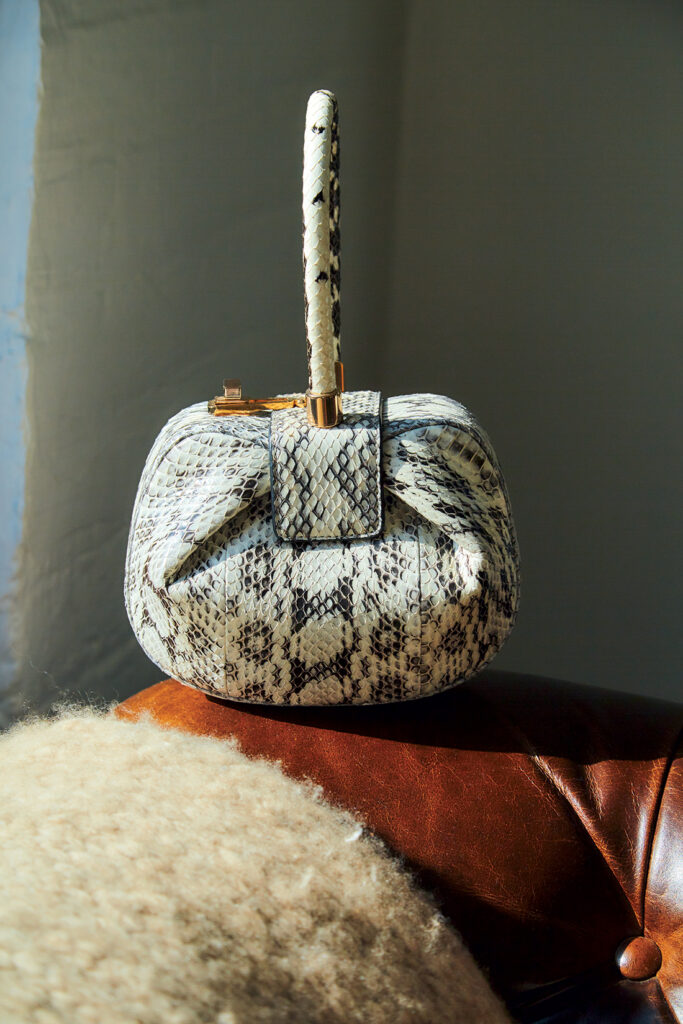
Gabriela’s first bag, the Nina, was initially created for her use alone
“The reason I made a bag in the first place was because we’d launched Gabriela Hearst ready-to-wear and shoes, and a friend of mine said: ‘You can’t be a fashion designer walking around carrying someone else’s bag!’ And I said: ‘You know what? You have a point!’ So I made a bag for me, which was the Nina. I was in no rush – there wasn’t going to be a business proposition, or launch, or marketing – I just made the bag for myself. Then, I was at a show in Paris in the autumn of 2015, and I had my bag with me. There were some Japanese buyers who came up to me, pointing at it saying: ‘Kakkoii! Kakkoii!’, which means ‘cool’ in Japanese. And so I thought, maybe I should just make 25 of these bags to give to my friends and people I love? Like the owner of the factory we use, or my friends who are doing incredible jobs working for really good causes.”
Gabriela’s then one-off bag’s public allure didn’t end there. “Not long after that, I was in the elevator at Claridge’s in London with my Nina, which opens in a very special way, and this guy in the elevator says to me: ‘That’s a very interesting bag, who makes it?’,” recalls Gabriela. “I said: ‘I do, it’s the prototype.’ He asked if he could buy one for his wife, and I said yes of course, and he gives me his card, and it’s Jony Ive [chief design officer] from Apple. I freaked out when I saw his name. Thankfully, not in front of him, but inside, I was going crazy.”

The meeting was a fortuitous one indeed, for a designer who hadn’t even considered seeing her bag on the arm of anyone other than herself, or her nearest and dearest. “It was like a sign. So I called my husband and my best friend, and we had 25 Nina bags made. I sent one to Jony for his wife, and he sent me the iPad Pro, so that worked out. Then my friend Brie Larson wore hers right before she won her Oscar. So we made this wish list, and suddenly all these names were on it… and we’d only made 25 bags. Then we had 100 names; then it was 1,000. And then the department stores started calling, asking if they could have them,” says Gabriela.
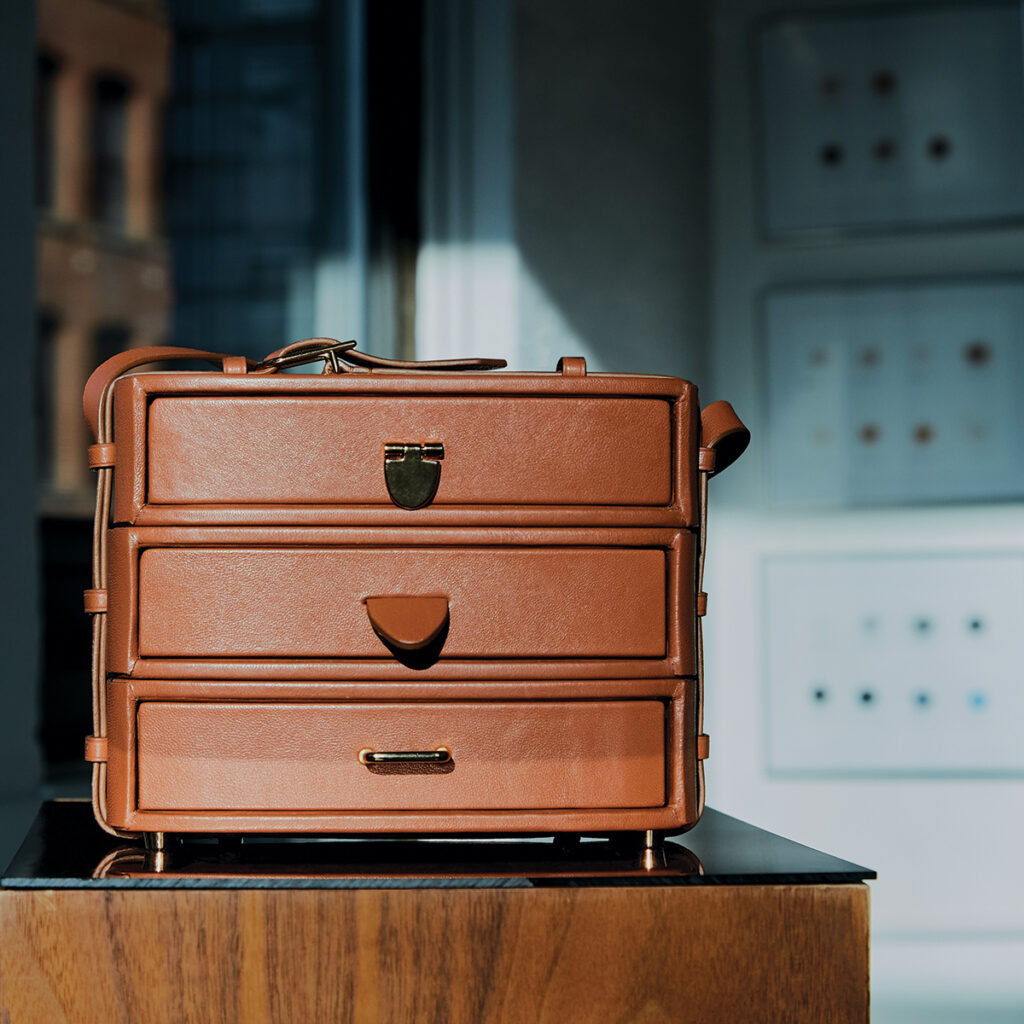
The Joni bag, Gabriela Hearst
In the early days of launching her own label, one would assume the prospect of becoming the creator of the hottest piece of arm-candy on the planet would have been an incredibly attractive business opportunity. But not for Gabriela. “I had to say no,” she explains. “These huge stores would show myself and my head of sales their wholesale plans, where we basically had to sell double the amount of bags we would need to than if we sold them ourselves, to make the same amount of money. It just made no sense with regards to our focus on sustainability and the long-term view. We’re already taking the natural resources from this planet, so why make twice as many? It just didn’t tick the eco-friendly box. The only reason you would sell to everyone is to become very well-known very quickly, which is dangerous. As far as the long-term view goes, that’s not for us. So we keep it very small, and sell to our clients only from New York.”
Exquisite, architectural and eye-wateringly priced, each bag is handmade from the finest leathers, comes with a microchip to confirm it’s authenticity, and up until very recently, could only be ordered directly from the brand by email. “I have two long-term values,” says Gabriela. “Long-term view, and sustainability. We only ever cut leather to supply customer demand, so we never over-produce our bags. Similarly, before we go and buy new materials every season for ready-to-wear, we look at our dead stock and see what we can do with it. Because we work with the most beautiful fabrics in the world, I say: ‘Let’s not buy anything new yet, let’s look at what we have left to use, and not be wasteful.”

While sustainability might be one of the biggest talking points in fashion right now, it’s been a way of life for Gabriela. Raised on an organic cattle and merino wool sheep-rearing ranch in Uruguay – nature, and the need to be resourceful, responsible and respectful, was a hugely powerful presence in her childhood. “We were sustainable out of a utilitarian perspective: that was the way things were done,” she explains. “We were off the grid, so we had solar panels before most other people did, and water was drawn from the earth. It was so remote, with vast amounts of land, and when night came, all you could see were stars, and all you could hear was nature. I think that’s why it’s a very natural thing for me to want to protect it, because I understand that actually I’m not protecting nature, I’m protecting humankind, because we are the ones who are eventually going to get eradicated.”
With 99 per cent of Gabriela Hearst textiles sustainably sourced – and as of June, all of the brand’s packaging biodegradable, including recycled cardboard hangers – next on the list is significantly reducing the company’s carbon footprint by only transporting their products by boat. “The issue is that as a civilisation, we’re always rushing,” she explains. “But because of the way in which we produce our bags, they are now only going to be shipped by boat. And then we’ve set goals for ready-to-wear and shoes. But every year, we’re going to be increasing the percentage of product we ship by boat. It’s all about goals.”
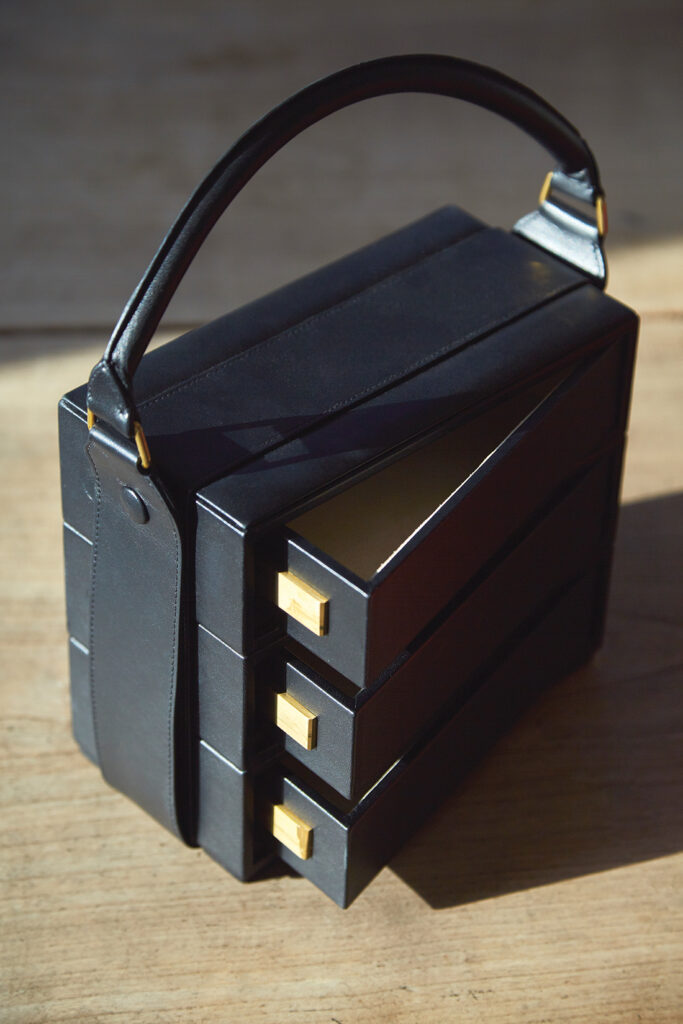
The Mitchell bag, Gabriela Hearst
With a dream of creating a business model that can be scaled and copied globally, Gabriela sees her company – which, in just under four years has achieved an annual sales revenue of Dhs66 million – as a working laboratory, proving sustainability and luxury are not mutually exclusive. “In the beginning, advisors urged me not to associate my label with sustainability, because no other luxury brands did,” she explains. “But I’m lucky, because I’m older, and I don’t listen. Luxury should be sustainable, they shouldn’t be competing concepts. I don’t think there is anything more important in the world right now.”
Describing herself as “a feminist, an environmentalist, and a mother-of-five”, Gabriela’s personal and professional values are perfectly aligned. “I come from a Latin culture where you are taught to leave your kids better off on this earth than you started, and I don’t think we’re doing that. We’ve kind of left them in a mess, and it’s scary. But you can’t just freeze in a panic about it. You have to focus.”

Using fashion as a language of political engagement, Gabriela wants to educate consumers within the environmental movement that there’s a place for luxury, pleasure, great design and quality – and it doesn’t have to cost us the earth. “I love doing what I do; I want to do it for as long as possible. But I want to make things that have a purpose. Just making things that are beautiful and desirable is not enough for me.”
Keen to emphasise that she’s not an “alarmist”, the designer is adamant that being “more curious and passionate” about consumerism would help dispel the myth that sustainability is all about “tree-hugging and granola.” She tells us: “For me, sustainability is all about taking responsibility. We do so many things mindlessly. We have to awaken that part of our brains in regard to personal consumption. You have to ask yourself: ‘Do I really need to use this plastic knife and fork with my salad? Should I really buy a banana sold in it’s very own plastic bag? That’s why education is important.” The designer concludes: “I’m definitely not doing this to be rich, and I’m definitely not doing this to be famous. I’m doing this because I’m meant to leave something better behind for my kids. I mean, who cares about making it as the biggest fashion brand on the planet, when there’s no planet left?”
Read more: Dubai’s upcycyling fashion boutique leading the way for sustainable living
- Words: Lucy Wildman

